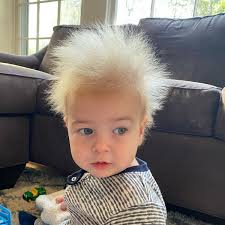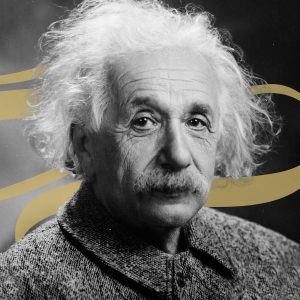

Usual onset between 3 months – 12 years.
Duration-until puberty
Extremely rare process, only about 100 cases documented around the world.
A rare structural anomaly of the hair with a variable degree of effect.
Hair that is silvery, dry, frizzy, wiry, and impossible to comb, and stands straight out from the scalp.
The hair is often dry but not fragile or brittle.
UHS is mainly autosomal recessive, but there are a few documented cases where multiple family members display the trait in an autosomal dominant fashion.
It is still being decided whether TCHH is autosomal dominant, or autosomal recessive.
Three genes that have been causally linked to UHS: PADI3, TGM3, and TCHH.
These genes encode proteins important for hair shaft formation.
The quantity of hair on the head does not change.
Hair grows more slowly and becomes increasingly uncombable.
50% of all scalp hair shafts must be affected to be clinically apparent.
This syndrome affects the hair shaft of the scalp and does not influence hair growth in terms of quantity, textural feel, or appearance on the rest of the body.
The hair in UHS is normal in quantity and is usually silvery-blond or straw-colored, disorderly, stands out from the scalp, cannot be combed flat.
UHS is caused by mutations in one of three possible genes; PADI3, TGM, or TCHH, which code for proteins involved in hair shaft formation.
Improvement often occurs in later childhood.
The condition usually improves over time, and will have better hair structure once it reaches adolescence.
By early adulthood, phenotypic symptoms of UHS spontaneously improve or disappear.
Eventually the hair of people with UHS will lie flat and appear near normal in texture by adolescence or early adulthood for unknown reasons.
Persons affected by this disorder have difficulty managing and grooming their hair.
Affected individuals usually possess blonde or silver hair that may be present at birth or develop over time.
There are several structural abnormalities in the hair shaft.
The hair shaft from affected individuals reveals a kidney bean, triangular, or oval diameter, unlike the circular shaft shape displayed in straight hair.
The hair is triangular or kidney-shaped, and has a longitudinal groove on one or two faces.
Such a shape irregularity to the diameter of the hair shaft prevents the hair from lying neatly against adjacent hair fibers.
Normally trichohyalin a structural protein responsible for the proper cylindrical fiber topology of the hair shaft binds to other trichohyalin and keratin-intermediate filaments creating the proper cross-links and cylindrical shape of the hair shaft.
The chromosomal location for this TCHH gene is located on chromosome 1.
PADI3 and TGM3 are two enzymes responsible for post-translational modification of TCHH important for cross-linking of TCHH within the hair.
Mutations in TCHH, PADI3, or TGM3 result in improper cross-linking and the resulting irregular shape of the hair shaft.
It is also proposed that premature keratinization of the inner hair root forms a rigid sheath altering the shape of a hair strand as it grows out of the root.
Uncombable Hair Syndrome 2 is caused by a defect in Transglutaminase 3 (TGM3) gene, that helps creating the enzyme known as Transglutaminase 3.
Transglutaminase 3 is located on chromosome 20, and is found in skin cells known as keratinocytes and corneocytes.
Transglutaminase 3 helps frame the scalp, root, and strands of hair, binding molecules to other proteins.
These cross links provide strength and structure to the cells’ skin and hair cells.
Uncombable Hair Syndrome 3 is caused by a defect in the PADI3 gene located on chromosome 1.
Peptidylarginine-deiminase 3 gene provides instructions for creating an enzyme called peptidylargine deiminase 3.
PADI3 is found within the skin’s keratinocytes.
PADI3 gene adjusts proteins that are giving structure to the hair strand, and involves a process called deimination.
While sometimes observed with other disorders, it is believed that Uncombable Hair Syndrome is an isolated disease.
TREATMENT:
No definitive treatment exists.
The use of soft brushes and gentle conditioners is recommended.
Avoiding hair treatments that can be harsh on hair: excessive brushing, blow drying, perms, or coloring hair is recommended.
Uncombable hair syndrome alone is not associated with physical, neurologic, or mental abnormalities.
